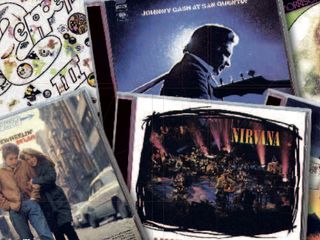
30 Classic acoustic albums
ACOUSTIC WEEK: The truly great acoustic guitar album is a rare and wonderful thing. After all, there are always watery eyed singer-songwriters out there warbling away about their ex-girlfriends, flooding the market with heartfelt acoustic rubbish.
It takes a little bit more than three limply strummed chords and a freshly broken heart to make a genuinely timeless acoustic classic, and to prove the point we've rounded up 30 of the finest unplugged albums ever made. Enjoy...
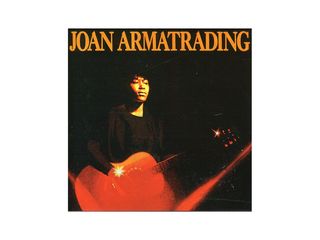
Joan Armatrading (1976)
The archetypal Joan Armatrading album effortlessly blends eclectic folk songs with sophisticated pop. It also boasts the classic Love And Affection, a big hit single for her.
On the strength of it, the album blazed a trail both commercially and artistically. A unique brand of poetic, confessional lyrics are sung with her trademark vocal technique of switching from warm ‘normal’ voice into an airy falsetto. Her sensitive guitar style and beautiful melodies make it one of the best singer-songwriter albums of all time. She played 6- and 12-string Ovations on the album.
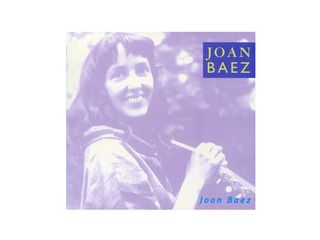
Joan Baez (1960)
After her first appearance at the 1959 Newport Folk Festival, Joan was signed to Vanguard, who at the time were a relatively small folk label.
Her first studio album for them, Joan Baez, was released in 1960. It was a record with deep material and plenty of emotion. Most of the songs on this classic folk album have their origins in the old country, be that England or Africa , Spain or deepest Appalachia. Her version of Silver Dagger, an Appalachian ballad, is haunting and compelling while Preso Numero Nueve is a forerunner of her later strong political views. A rewarding listen!
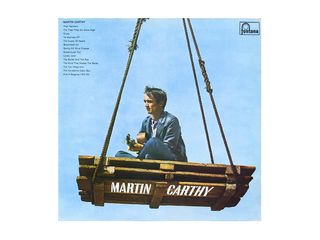
Martin Carthy (1965)
Martin Carthy’s self-titled debut album, his first for the Fontana label, was one of the most important folk releases of the 1960s.
The album features a variety of traditional and contemporary folk songs, which Martin would regularly perform live throughout his career. It represents a master of British folk music in the best of traditions. Highlights include the 17th century-style And A Begging I Will Go, the emotional Irish revolutionary ballad, The Wind That Shakes The Barley, and a version of Scarborough Fair, from which Paul Simon famously borrowed.
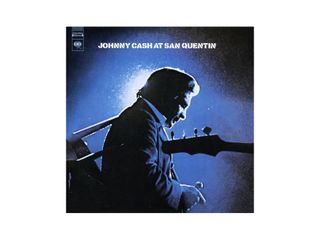
At San Quentin (1969)
The quintessential live album by Johnny Cash was recorded at the height of his ‘wild’ years.
Although Live At Folson Prison was released first, fans are torn between the two as to which is best. Playing to a receptive audience, it is clear that Johnny is at one with the crowd. He is clearly on the edge as he tears through jailhouse ballads, Starkville City Jail and San Quentin, rockabilly songs, and classic hits including I Walk The Line and Ring Of Fire.
Without a doubt, though, the real standout is Cash’s version of Shel Silverstein’s A Boy Named Sue, where he shows his absolute mastery. The whole concert is now available on a CD re-issue.
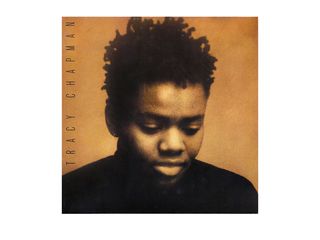
Tracy Chapman (1988)
One of the most stunning debut albums of all time, instantly establishing Chapman as a major musical force.
Although the songs cover such controversial issues as domestic violence, racial division and economic injustice, the album offers both immediacy and integrity of purpose. One of the most endearing features of her lyrics is that they offer optimism for change.
There are many highlights, but Talkin’ Bout A Revolution is a particular standout, and one of those rare songs that remains both topical and timeless. Chapman unsurprisingly went on to win a series of Grammy Awards, but her debut remains essential for the uninitiated.
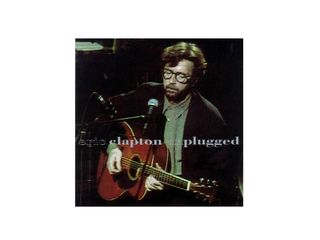
Unplugged (1992)
This was Clapton’s first album release after the tragic death of his son, Conor.
The unplugged series was just starting to gather momentum at the time, so a hungry public were keen to hear how Eric’s songs would hold up when stripped of slick studio production values. Clapton himself was baffled by the huge success of the album.
The obvious highlight is the heartbreaking Tears In Heaven, an elegy to his young son. That song, along with a reworked version of Layla, got most of the attention but, in reality, Unplugged was also a fine blues album. There are great versions of a number of blues classics including Robert Johnson’s Walkin’ Blues.
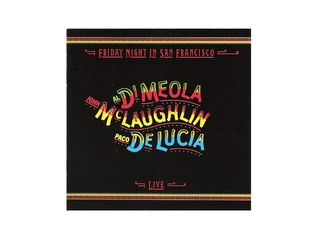
Friday Night In San Francisco (1980)
This Grammy-Award winner is considered by many to be one of the best live acoustic guitar albums ever recorded.
The music is strongly influenced by flamenco and the only instruments played are three acoustic guitars of McLaughlin, Al Di Meola and Paco de Lucia. Highlights include the ferocious opener, Mediterranean Sundance, and an Egberto Gismonti piece, Frevo Rasgado, which features a beautiful melody with stunning improvisation leading into an apocalyptic finale.

Sunshine Superman (1967)
Sunshine Superman was one of the earliest, and finest, examples of psychedelic pop topped with a liberal sprinkling of folk and jazz.
An affectionate nod to fellow folkie, Bert Jansch, Bert’s Blues is just one of the many gems to be found on this album. However, the two main highlights are clearly Sunshine Superman and Season Of The Witch. The first is a summer sing- a-long favourite, whilst the second, a moody eve- of-destruction tale.
The rest of the album is filled with lengthy, abstract folk jams. Donovan took care to surround himself with some of the finest session musicians in order to pull this off.
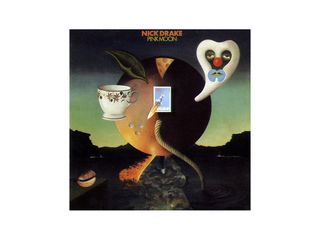
Pink Moon (1972)
Nick Drake is the perfect example of the tortured poet who wasn’t appreciated in his own time and died far too young.
The lack of appreciation and commercial success both contributed to his chronic depression. It took decades for the World to catch up to the albums he left behind. Pink Moon, although a mere 28 and a half minutes, was his third and last album and arguably the best.
His songs have a heartbreaking beauty to them along with a naked honesty. The starkness of the album has drawn frequent comparisons to the music of blues legend Robert Johnson, someone who Nick admired greatly.
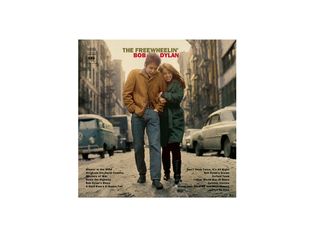
The Freewheelin' Bob Dylan (1963)
This landmark album, featuring some of the 1960s’ most memorable songs, showed Dylan emerging as the most distinctive and poetic voice in the history of American popular folk music.
Featuring Blowin’ In The Wind, Masters Of War, A Hard Rain’s A-Gonna Fall, Don’t Think Twice, It’s All Right, and I Shall Be Free, you could be forgiven for thinking of this as a greatest hits album. His inimitable guitar and harmonica playing still has a sense of urgency today.
This is clearly Dylan at his acoustic best and one of the most influential acoustic albums of all time. Also worth checking out is his fourth album, Another Side Of Bob Dylan.
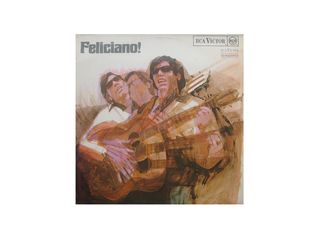
Feliciano! (1968)
Feliciano! is an album of interpretations of mid 60’s classics infused with José Feliciano’s languidly beautiful guitar playing and singing.
The highlight is his version of The Doors’ Light My Fire, which he made his own. In fact, for years, people assumed that The Doors had covered his version! As a single, Jose’s acoustic version of Light My Fire went on to sell over a million records and it made the singer a celebrity overnight.
It also earned him two Grammy Awards. The album, which went gold in 1968, also included strong covers of songs by The Beatles and Bert Bacharach. It remains a firm ‘chillout’ favourite around the world.
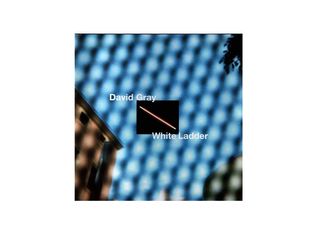
White Ladder (1999)
David Gray’s White Ladder is certified seven times platinum in the UK with sales of over 2 million accrued over more than 100 weeks in the Top 40.
With his previous albums, Gray produced quality, folk-tinged songs with a raw yet melodic voice. However, for White Ladder, he adopted a more modern approach, adding beats and electronic sounds to the more traditional accompaniment of acoustic guitar and piano.
Amazingly, Gray recorded White Ladder in his house, rather than a sophisticated studio. Amongst the many standouts is Sail Away, a number that blends acoustic and electric. One of the best folk-pop albums ever released.
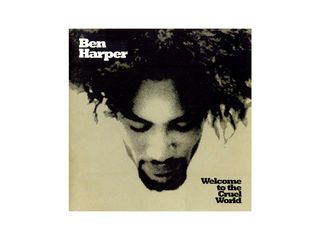
Welcome to The Cruel World (1994)
It was Harper’s devotion to vintage acoustic guitars that imbued 1994’s Welcome To The Cruel World with its sonic warmth.
The album is very much in the Tracy Chapman mold and fans at the time saw him as a transcendent folk singer. His style of playing is best described as an unusual blend of calypso and Mississippi Delta blues. Political conviction may not have been hip in the nineties, but Harper excelled at it.
Two such numbers, Like A King and Take That Attitude To Your Grave burn with conviction. Forever, a tender ballad, also demonstrates his emotional range.
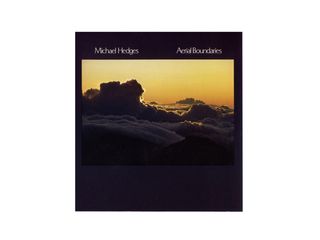
Aerial Boundaries (1985)
Many rate Aerial Boundaries as Michael Hedges’ best album as well as being one of the most ground-breaking albums in acoustic guitar history.
It amply demonstrates how he opened a new chapter on steel-string guitar playing. By employing a number of unorthadox and radical techniques, Hedges has produced some moments of surprisingly beautiful music. The songs are haunting and the guitar playing sometimes almost trance-like.
Simply put, Aerial Boundaries is one of the most important acoustic albums ever made – it doesn’t sound like anything else that was recorded before it.
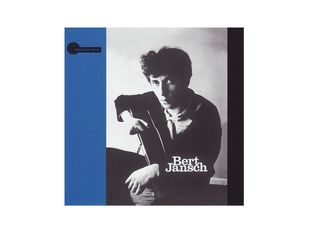
Bert Jansch (1965)
Bert Jansch’s ground-breaking virtuoso acoustic guitar playing is in full evidence on this, his first solo album.
His impressive list of admirers include Jimmy Page, Neil Young, Noel Gallagher, Bernard Butler and Johnny Marr. Jansch recorded the album on a borrowed guitar and with a tape recorder in his flat. It deservedly earned him much praise at the time for his innovative technique and powerful songs.
This album also has Jansch’s biggest hit, the haunting Needle Of Death, written about the death of a friend due to heroin overdose. Without a doubt, Bert Jansch is British folk at its best.

6 And 12 String Guitar (1971)
Kottke is part of the rare breed of virtuoso composers who were able to break new ground for the acoustic guitar while achieving an enormous popularity in their own lifetime.
6 And 12 String Guitar, also often referred to as the armadillo album, demonstrated Kottke’s strikingly original guitar style, a melting pot mix of blues, bluegrass, classical, and pop music. Upon its release, the album was praised for the fact that it sounded vastly different from the work of other acoustic players.
Kottke was clearly a master of inimitable acoustic steel- string, fingerstyle pieces and this album showcased his talents perfectly.
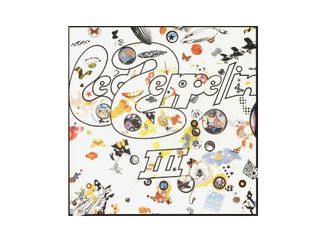
Led Zeppelin III (1970)
By 1970, Led Zeppelin had already made a name for themselves as purveyors of massive riffs.
So when they released Led Zeppelin III, an album consisting mainly of acoustic material, it took the whole music world by surprise. The album boasts many great tracks including Gallows Pole, a frenzied take on a traditional folk tune, and two softer, more romantinng tunes, Tangerine and That’s The Way, proving that there was clearly more to Led Zeppelin than just pure power.
The album has stood the test of time and it is incredible to think that it was initially seen as a disappointment by critics and fans alike.
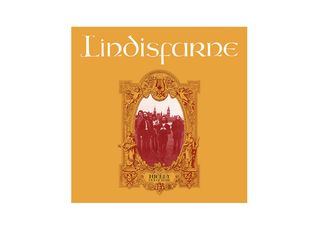
Nicely Out Of Tune (1970)
Nicely Out Of Tune is a platter full of Alan Hull’s literate acoustic songs.
Although the album is probably best remembered for the shimmering hit single, Lady Eleanor, there are many other numbers of equal merit. Comparisons with Fairport Convention were not accurate, despite the use of mandolin, fiddle and harmonica alongside delicate acoustic picking and occasional electric guitar.
In fact, it was hard to pin a tag on Lindisfarne as they quickly developed their own unique sound. Their ramshackle debut has become a classic and was recently re-issued in a remastered form with bonus material.
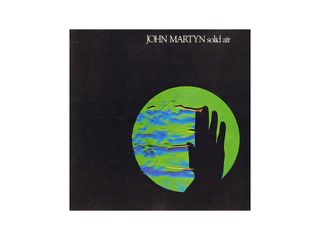
Solid Air (1973)
Over the years, John Martyn has offered us an eclectic range of sounds and styles.
Elements of jazz, blues, and rock are all in evidence, but folk is at the core of his sound. It is hard to pick a particular highlight on Solid Air as the whole album is a masterpiece. However, if only for sentimental reasons, Solid Air is a favourite of many, a beautiful tribute to his depressed friend, Nick Drake.
Another number, May You Never was a favourite of Eric Clapton, who later covered it on his Slowhand album in 1977. Overall, Solid Air is one of the most original and satisfying folk albums ever made.
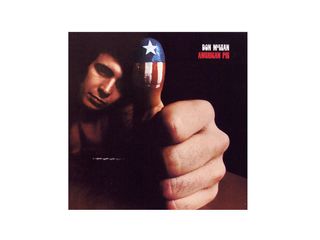
American Pie (1971)
McLean has never enjoyed complicated, pretentious and non-melodic music.
His inspiration is drawn from simple, beautiful songs. Mention his name and most people will instantly associate American Pie with him. A huge worldwide hit single, it was a brilliant song, a metaphor for the death and rebirth of rock that’s as complex as it is instantaneously accessible.
The album itself sold well on the strength of the title track and his other song, Vincent, and it remained in the charts for 48 weeks and went gold in 1972. One of the most famous folk albums of all time!
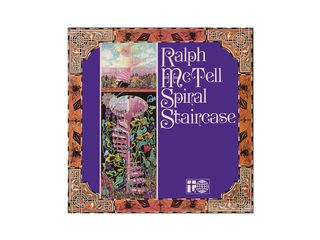
Spiral Staircase (1969)
Like McLean, McTell is always associated with one particular major hit single.
In his case it is Streets Of London, originally from his second album, Spiral Staircase. This low-key acoustic version is more sparse than the mid-’70s re- recording that made it a huge success in the British charts. The tone of the album is largely acoustic, with occasional orchestral arrangements by Mike Vickers.
As with several other folkies at the time, a smattering of blues is also present in the form of Robert Johnson’s Kind Hearted Woman Blues, alongside a selection of hauntingly ethereal songs.
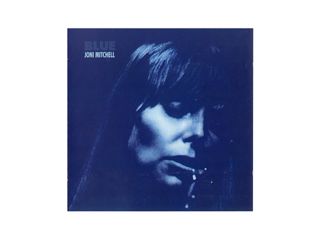
Blue (1971)
Many regard Blue as being Joni’s best album.
It introduced the confessional singer-songwriter’s original style to a mass audience. One of the many highlights has to be the eerie, doom-laden This Flight Tonight, which was later covered by heavy rockers, Nazareth. But, in truth, almost every song on it is a classic, especially The Last Time I Saw Richard, A Case Of You, and California.
The music on the album alternates between acoustic guitar and piano-dominated arrangements. Steve Stills and then-current flame James Taylor are just some of the heavyweights playing in support. Popular folk music just doesn’t get any better than this!
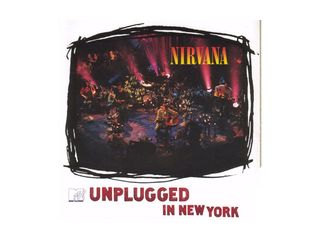
MTV Unplugged (1994)
MTV Unplugged is perhaps not an obvious choice for everybody’s ‘classic’ acoustic album section, but with it, Cobain and chums showed us the more vulnerable side of their songs.
Even if you’ve not been a fan of their work, forget everything you think you know about the band when you check this out. This is not Teen Spirit, it’s a toned-down, relaxed Nirvana, and it works well. Several covers are on the album, the best of which has to be Leadbelly’s Where Did You Sleep Last Night.
Up to that point, Nirvana could simply have been a cultural phenomenon stuck in their time. MTV Unplugged showed the world that was not the case.
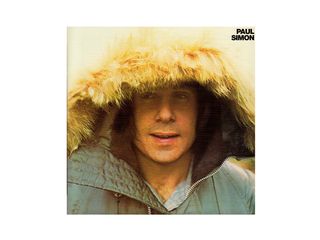
Paul Simon (1972)
It must have been fairly nerve racking to follow the huge success of Simon & Garfunkel’s Bridge Over Troubled Water with a solo venture.
But Paul Simon’s 1972 solo debut is a far more modest affair, and all the better for it. It was recorded with an eclectic crew of players, including jazzmen Stephane Grappelli, Jerry Hahn, and Ron Carter, and Simon was happy to offer up different musical palettes.
The reggae-styled Mother And Child Reunion and Me And Julio Down By The Schoolyard, two particular high points, have an up tempo charm, but there are many other moods here. All in all, a very varied album, and one of Simon’s best.
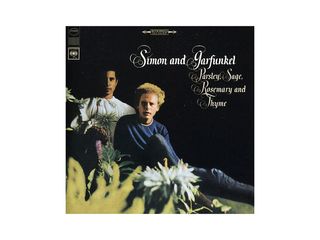
Parsley, Sage, Rosemary & Thyme (1966)
Parsley, Sage, Rosemary & Thyme was the big breakthrough album for Simon & Garfunkel as artists.
Engineer Roy Halee ensured that the album would sound great. Just compare the clumsy overdubbing of their earlier The Sound Of Silence with anything on this album and you’ll see what we mean! The highlight has to be the title song.
It remains a beautiful signature piece, relying simply on acoustic guitar and harpsichord to convey its haunting marriage of English ballad and antiwar plaint. The album showers the listener in acoustic delicacy – a perfect blend of traditional and modern ideas.
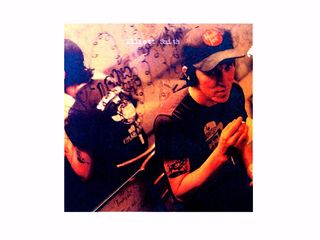
Either/Or (1997)
Elliott Smith is arguably the best alternative acoustic solo artist of the last 10 years.
He has always worn his influences on his sleeve; Beatlesque melodies with Arlo Guthrie fingerpicking and Nick Drake lyrics. On this album, his idiosyncratic guitar picking is well served by its low-fi production. The songs are full of subtle chord changes with haunting and frail vocals.
In many ways, this can be seen as his ‘perfect imperfect’ album, before his production values became more hi-fi and his arrangements more expansive and melodically complex.

Tea For The Tillerman (1970)
Cat Stevens was always looking for some form of spirituality.
He eventually found it in the form of Islam later in life. But way back in 1970, on Tea For The Tillerman, he wrote songs about living in the modern world while rejecting it in favour of spiritual fulfilment. Out of all the Brit folk- rockers, Cat was the most gifted tunesmith and Wild World and Where Do The Children Play? illustrate this perfectly.
Tea For The Tillerman is a sublime collection of beautiful songs that will enter your subconscious and stay there – an absolute must for anyone looking to complete their classic acoustic album collection!
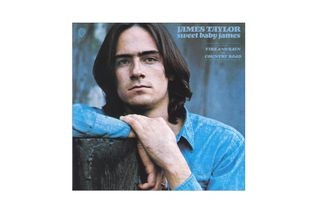
Sweet Baby James (1970)
Sweet Baby James was Taylor’s first album for Warners after a short stay at Apple, the Beatles’ label.
The album’s charm lies in the choice of instruments used, acoustic guitar, piano, steel guitar, fiddle and a few brass arrangements. At times reminiscent of The Band, The Byrds and Dylan in his country phase, Sweet Baby James is widely regarded as the folk-rock classic that made James Taylor a household name.
The standout track is Fire And Rain, inspired by his stay in a psychiatric institution in the mid-1960s and the suicide of a fellow patient, although the album boasts many other gems. A benchmark album for lovers of folk-pop healing music.
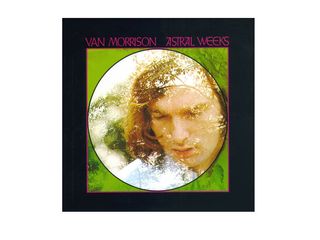
Astral Weeks (1968)
Astral Weeks is one of those classic albums that everyone should have!
Released back in 1968, it blended jazz, blues, folk and classical music ideas together to make ethereal sounds quite unlike anything else at the time. The album was recorded in New York, with a team of seasoned jazz musicians and a string quartet.
Over this eclectic backdrop, Van’s vocal dexterity and passion oozes from every groove. Among the highlights are Madame George, which captures the mixture of joy and sadness that comes with the loss of innocence, and Cyprus Avenue, a song about unrequited, perhaps even forbidden love. An absolute masterpiece!
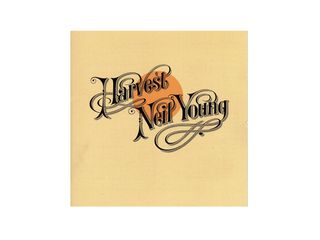
Harvest (1972)
When Neil Young found himself in Nashville in 1971, he decided to record some newly penned numbers with an impromptu band featuring bassist Tim Drummond, drummer Kenny Buttrey, and steel guitarist Ben Keith.
Collectively, they called themselves The Stray Gators and they went on to record one of the most enduring and best loved albums of his entire career, Harvest. The songs were about loneliness, loss, despair and longing.
Harvest has many highlights, but a favourite to many is Old Man, a song about a young man pondering over his own mortality. More than 20 years later, Young recorded a follow up, Harvest Moon.

Guitarist is the longest established UK guitar magazine, offering gear reviews, artist interviews, techniques lessons and loads more, in print, on tablet and on smartphones Digital: http://bit.ly/GuitaristiOS If you love guitars, you'll love Guitarist. Find us in print, on Newsstand for iPad, iPhone and other digital readers
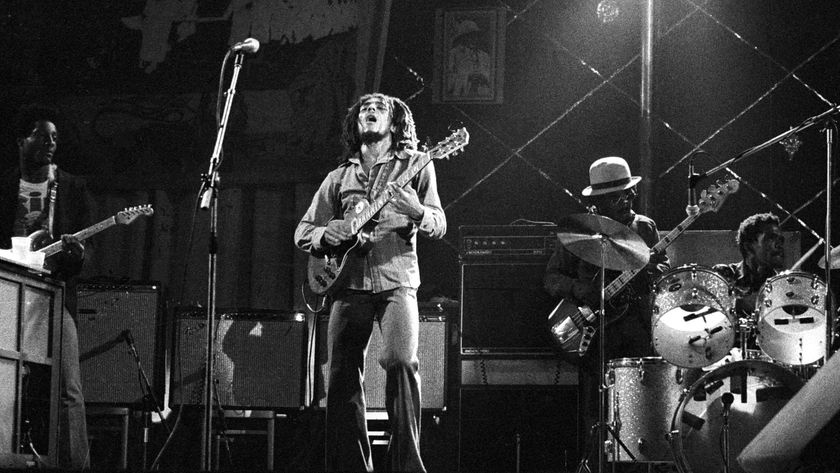
"Reggae is more freeform than the blues. But more important, reggae is for everyone": Bob Marley and the Wailers' Catch a Fire, track-by-track
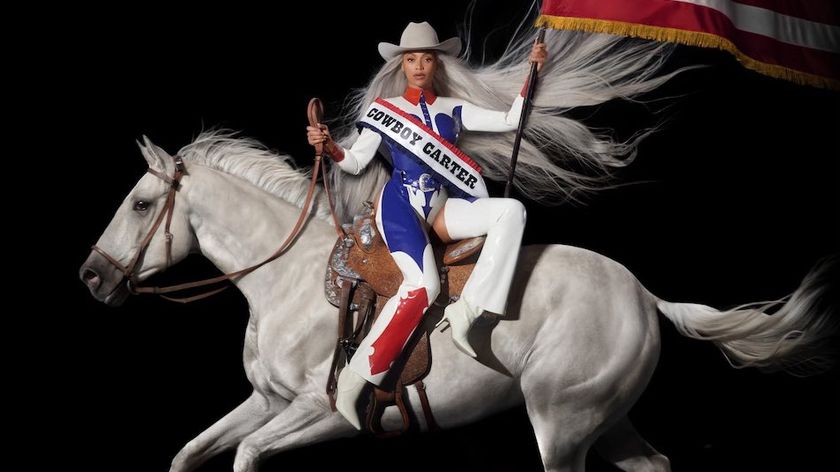
“Part of a beautiful American tradition”: A music theory expert explains the country roots of Beyoncé’s Texas Hold ‘Em, and why it also owes a debt to the blues

"Reggae is more freeform than the blues. But more important, reggae is for everyone": Bob Marley and the Wailers' Catch a Fire, track-by-track

“Part of a beautiful American tradition”: A music theory expert explains the country roots of Beyoncé’s Texas Hold ‘Em, and why it also owes a debt to the blues




![Chris Hayes [left] wears a purple checked shirt and plays his 1957 Stratocaster in the studio; Michael J. Fox tears it up onstage as Marty McFly in the 1985 blockbuster Back To The Future.](https://cdn.mos.cms.futurecdn.net/nWZUSbFAwA6EqQdruLmXXh-840-80.jpg)






